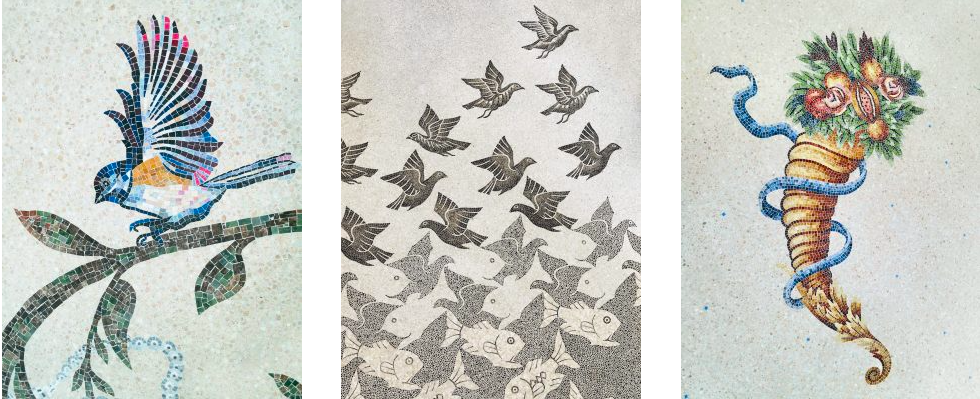Venetian floors: history, paving techniques, developments
Venetian floors have a long and distinguished history. Francesco Sansovino, a 16th century historian, tells of Venetian floors in his book of the late 1500s ‘Venetia, aristocratic and unique city’, where he describes with meticulous accuracy many of Venice’s art pieces and monuments. As quoted in a passage of Sansovino’s text: “[the floors] are commonly utilized for the bedrooms and the main rooms where the pavements, are not made of bricks, but of a different material called ‘terrazzo’ which is very durable, beautiful to look at and clean”.
Usually referred to in the singular, and also called ‘terrazzo alla veneziana’ or ‘seminato alla veneziana’, it is most commonly recognized as a composition of marble and stone pieces of up to 30-40 mm (11-16 inches), with concrete or pebble stone lime as binding agent, mixed with fine chips of marble and ‘cocciopesto’.
Venetian terrazzo: history
According to some historians, early traces of Venetian floors were found in some ancient Roman villas. Although it is known that in ancient Greece similar surfaces were already adopted (i.e. crushed terracotta with cement as binding agent), it is also true that these surfaces were intrinsically different. In fact, they totally lacked the Venetian floor’s smoothing process that made the composition absolutely uniform, as well as of the finest possible marble grain. The early compounds with marble, trace back to only few ancient above-mentioned ancient Roman villas, making those floors resemble the Venetian terrazzo and seminato, as we understand it today.
These floorings became mostly popular in seventeen hundreds’ Venice, during the Doges period, and particularly during the Renaissance.
Venetian floors: special features
I pavimenti alla veneziana hanno una costituzione monolitica e dallo spessore marcato. Si sono imposti nelle edilizia della tradizione veneziana, per una propria caratteristica forte: il notevole temperamento a sopportare deformazioni di grado pronunciato, senza subire sconnessioni o fratture evidenti, a dispetto della particolare conformazione della città lagunare.

Venetian floors: the terrazzos and seminatos technique
The noble art of laying Venetian floors follows a specific technique and dates back to the traditional craftsmanship of the floating city. Let’s start with the main differences: Venetian terrazzo is a wet technique, while Venetian seminato is a dry technique. The first one is characterized by thick marble stones (tipically, with grain size from n.5 upwards), whereas the second one is characterized by finer marble stones (typically, with grain size n.5 or less) and with a denser distribution.
The laying procedure begins with the preparation of a cement and sand screed on which the seminato or terrazzo will rest (a space of 2-3 cm – 1 inch or less -).
The second step consists in preparing a layer composed of a mixture of concrete, marble powder and tiles which, after wetting, is applied as background layer. The next step consists in scattering the bigger stones, which are subsequently beaten and pressed. In the seminato case, the screed is made of cement and tiles (there is no marble powder). Venetian terrazzo, realized by wet technique, is undoutedly more sophisticated, and has higher average costs.
To mantain these floors cleaning with neutral detergents is highly recommended while acid and limescale usage is forbidden.

Venetian Floors: current developments
Icons of sophistication and elegance, Venetian floors are today highly appreciated and fashionable. The so called ‘marble effect’, extra shiny yet resistant to every abrasion, is increasingly requested on the international interior design scenario.
The marble effect gives a greater aura of luxury and allure to floorings that are classical in origin but of superlative sophistication.
The wide range of customizations of Venetian floors, as far as colors and shades are concerned, makes them the ‘top of the list’, today and in the future, among demanding clients.

